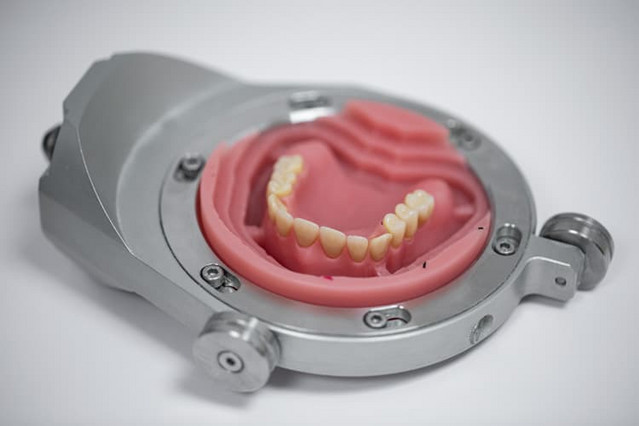The digital manufacturing process for complete dentures ensures precise results and improves efficiency and accuracy.
1. Digital production process:
The entire process is digital, which enables
a high level of predictability, consistency and reproducibility.
2. Impression taking with an intraoral scanner:
Instead of traditional impression materials, an intraoral scanner is used to create a digital image of the oral cavity. This enables precise and comfortable impressions without the traditional discomfort.
3. Bite registration with digital models:
Digital technology allows bite registration and jaw movements to be determined directly in the patient's mouth using special hardware and software. The recorded data of the jaw relation and the movement of the lower jaw are automatically used in the design software.
4. Prosthetic diagnostics and tooth set-up:
A virtual avatar of the patient is created using the digital data. The digital tooth set-up is carried out on this basis, whereby the position and alignment of the teeth are planned virtually.
5. Digital fittings and adjustments:
Using digital technology, fittings and necessary adjustments can be carried out virtually, enabling fast and efficient fitting.
6. Completion: The final digital data of the full denture is designed in CAD software and sent via CAM software to the milling machine, where the denture is manufactured from the selected material.
